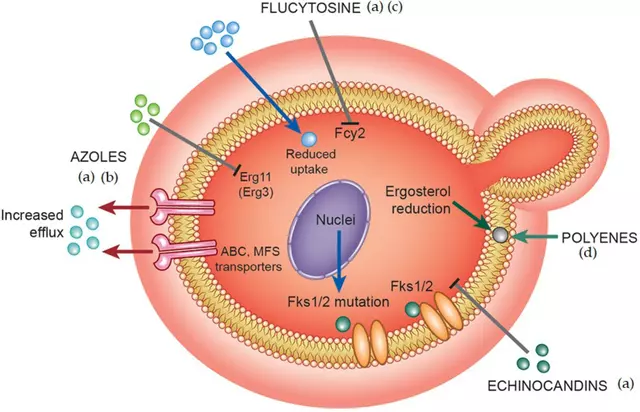Piracetam Dosage Calculator for ADHD
This calculator helps determine appropriate piracetam dosage for ADHD based on medical guidelines. Remember: piracetam is not FDA-approved for ADHD and should only be used under medical supervision.
Ever wonder if a brain‑boosting pill could calm the chaos of ADHD? You’re not alone. Parents, students, and adults alike keep asking whether a smart‑drug called Piracetam for ADHD can actually sharpen focus without the jittery crash of stimulants. Let’s break down what piracetam is, how it’s supposed to work, what the science really says, and whether it’s a safe side‑track for managing attention.
Key Takeaways
- Piracetam is a synthetic nootropic from the racetam family, not an FDA‑approved ADHD medication.
- Its proposed mechanisms involve modulating NMDA receptors and boosting acetylcholine activity, which may help memory but has limited evidence for attention.
- Clinical trials in ADHD are small, mixed, and often lack rigorous controls; benefits, if any, appear modest.
- Side‑effects are generally mild (headache, insomnia), but long‑term safety data are sparse.
- For most people, standard stimulant or non‑stimulant ADHD meds remain the first‑line choice; piracetam might be considered only under medical supervision.
What is Piracetam?
Piracetam is a synthetic nootropic that belongs to the racetam family, originally developed in the 1960s to improve memory and learning. It’s sold in many countries as a dietary supplement rather than a prescription drug. Unlike caffeine or prescription stimulants, piracetam does not act directly on dopamine pathways, which is why it’s often touted as a “gentle” cognitive aid.
Understanding ADHD and Attention Lapses
ADHD (Attention‑Deficit/Hyperactivity Disorder) is a neurodevelopmental condition marked by persistent inattention, hyperactivity and impulsivity. In the brain, the core problem is thought to be insufficient regulation of dopamine and norepinephrine in the prefrontal cortex, which hampers the brain’s ability to filter out distractions and sustain effort on tasks.
Standard treatment targets those neurotransmitters directly (e.g., methylphenidate boosts dopamine) or indirectly (e.g., atomoxetine raises norepinephrine). Piracetam, by contrast, aims at a different set of pathways, which raises the question: can it fill the same gap?

How Piracetam Might Act on the Brain
Proponents describe piracetam as a nootropic substance intended to enhance cognitive functions such as memory, creativity or focus. The most cited mechanisms are:
- Modulation of NMDA receptors: Piracetam is believed to increase the activity of the N‑methyl‑D‑aspartate (NMDA) subtype of glutamate receptors, which play a key role in synaptic plasticity and learning.
- Boosting acetylcholine turnover: Studies in rats show piracetam can raise acetylcholine levels in the hippocampus, a neurotransmitter linked to attention and memory.
- Improving blood‑brain barrier fluidity: Some animal work suggests the drug makes the brain’s protective barrier more permeable to oxygen and nutrients, potentially supporting overall brain health.
None of these actions directly address dopamine deficits, which are central to ADHD. That’s why the evidence must be examined carefully.
What the Research Says
The scientific record on piracetam for ADHD is thin. A handful of small‑scale studies from the 1990s and early 2000s attempted to answer the question, but their designs often lacked blinding, had short follow‑up periods, or used mixed populations (e.g., children with learning disabilities rather than pure ADHD).
One Russian‑language trial (n=45) reported modest improvements on the Conners' Rating Scale after eight weeks of 1,200 mg/day piracetam, but the study had no placebo arm, making the result hard to trust. A later double‑blind, placebo‑controlled crossover study in 30 adolescents (aged 12‑17) found no statistically significant change in continuous performance test (CPT) scores, though participants noted a slight reduction in self‑reported mental fatigue.
Meta‑analyses on racetams for cognitive disorders generally conclude that any benefit is small and inconsistent. In the context of ADHD, the consensus among neurologists and child psychiatrists (as of 2025) is that piracetam does not have enough high‑quality evidence to be recommended as a primary treatment.
How Piracetam Stacks Up Against Conventional ADHD Medications
| Attribute | Piracetam | Methylphenidate (Ritalin) | Atomoxetine (Strattera) |
|---|---|---|---|
| FDA approval for ADHD | No | Yes | Yes |
| Primary mechanism | Modulates NMDA receptors, ↑ acetylcholine | Blocks dopamine reuptake → ↑ dopamine | Selective norepinephrine reuptake inhibitor |
| Typical starting dose | 800‑1,200 mg per day, split | 5‑10 mg/kg per day | 0.5 mg/kg per day |
| Onset of effect | 1‑2 weeks | 30‑60 minutes | 1‑2 weeks |
| Common side‑effects | Headache, insomnia, GI upset | Appetite loss, insomnia, increased heart rate | Dry mouth, fatigue, nausea |
| Evidence for improving attention | Limited, mixed results | Strong, numerous RCTs | Moderate, especially in adults |
In short, piracetam’s profile looks appealing if you want a low‑stimulant option, but the data gap makes it a gamble compared to well‑studied stimulants or non‑stimulants.

Safety, Dosage, and What to Watch Out For
The drug is generally well‑tolerated at doses up to 4,800 mg per day, but most studies in healthy adults use 1,200‑2,400 mg split into two or three doses. For ADHD, practitioners who have experimented with it typically start at 800 mg twice daily and adjust based on response and side‑effects.
Potential adverse events include:
- Headache (most common)
- Insomnia or vivid dreams
- Gastrointestinal discomfort
- Rarely, anxiety or agitation
Because piracetam is not metabolized by the liver’s cytochrome P450 system, drug‑drug interactions are uncommon, but you should still discuss use with a pharmacist if you’re already on stimulant medication or antidepressants.
Pregnant or breastfeeding individuals should avoid piracetam due to insufficient safety data. Children under 12 have not been studied in rigorous trials, so pediatric use remains off‑label.
Who Might Consider Piracetam?
If you’re an adult with mild attention complaints, no history of stimulant response, and a preference for “natural‑feeling” options, piracetam could be trialed under medical supervision. It may also appeal to people who experience significant side‑effects from stimulants or who have contraindications (e.g., cardiac issues).
However, keep these caveats in mind:
- Expect only subtle changes, if any.
- Benefit is highly individual; some users report no effect.
- Cost can add up, as the supplement isn’t covered by insurance.
- Monitoring is essential - track attention scores, sleep, and any new symptoms.
In most cases, clinicians will first try a standard stimulant (methylphenidate or amphetamine) or a non‑stimulant (atomoxetine, guanfacine) before moving to a racetam.
Bottom Line
Piracetam is an interesting nootropic with a long history of use for memory enhancement, but for ADHD it remains a side‑track supported by limited, low‑quality evidence. If you’re curious, the safest route is to talk to a healthcare professional, start at a low dose, and set clear expectations about what improvement looks like.
Is piracetam legal in Australia?
In Australia, piracetam is classified as an unapproved therapeutic good. It can be bought online as a “research chemical” but cannot be marketed as a medicine. Always purchase from reputable sources and discuss use with a pharmacist.
Can piracetam replace stimulant medication for ADHD?
Current evidence does not support using piracetam as a primary ADHD treatment. Stimulants have robust, large‑scale trial data, while piracetam’s benefits are modest and inconsistent.
What dose of piracetam is typical for adults?
Most adults start with 800 mg twice a day (total 1,600 mg) and may increase to 1,200 mg twice daily based on tolerance and response. Do not exceed 4,800 mg per day without doctor supervision.
Are there any serious risks or long‑term side‑effects?
Serious adverse events are rare, but long‑term safety data are limited. Report any persistent headaches, mood changes, or sleep disturbances to a healthcare provider.
Can I take piracetam together with my ADHD medication?
There’s no known harmful interaction, but combining them may amplify side‑effects like insomnia. Always get a clinician’s OK before stacking any nootropics with prescription drugs.





10 Comments
Rachel Valderrama-21 October 2025
Oh great, another miracle‑pill promise – because we all need a magic bullet for ADHD, right? Sure, piracetam sounds fancy, but it’s still just a supplement with a handful of shaky studies. If you’re hoping for a jitter‑free focus boost, you might be setting yourself up for disappointment. Stick to the evidence and keep realistic expectations.
Brandy Eichberger-26 October 2025
Dear seekers of cerebral refinement, allow me to elucidate the nuanced position of piracetam within the pharmacological pantheon. While its historical pedigree as a memory‑enhancer is undeniably intriguing, one must acknowledge the modesty of its efficacy in the realm of attentional regulation. The literature, though sparse, hints at marginal gains that are appreciable only to the most discerning of connoisseurs. In any case, the pursuit of such a subtle adjunct should be accompanied by rigorous clinical supervision, lest one indulge in mere pseudo‑optimization.
Eli Soler Caralt-31 October 2025
i cant help but muse 📚 on the existential dance between neurotransmitters and our fleeting desire for clarity – piracetam is like a whisper in a cacophonous hall. its NMDA chorus may tingle the synaptic seas, yet the true alchemy lies beyond the veil of placebo. nd if u think it's a silver bullet, u might be chasing a mirage in a desert of overstimulated cortex 🌵. nonetheless, the pursuit of a gentler cognition is a noble quest, albeit one fraught with epistemic shadows.
Eryn Wells- 5 November 2025
Let’s celebrate the curiosity you’ve expressed while keeping the conversation grounded for everyone. 🧠💡 Piracetam’s modest effects can be a stepping stone, but we must temper optimism with the rigor of clinical evidence. Sharing personal experiences alongside peer‑reviewed data ensures that newcomers feel welcomed and informed. 🌍 Together, we can navigate the subtle gradients of neuroenhancement without losing sight of safety.
Kathrynne Krause-10 November 2025
Picture a sunrise spilling amber over a restless mind – that’s the sort of poetic hope some cling to when they hear “piracetam.” Yet, the reality often settles into a muted pastel of mild headaches and sleepy evenings. If you’re chasing a kaleidoscopic boost, remember that the brain’s chemistry rarely obeys a single color palette. Embrace the spectrum, but wield it with the prudence of a seasoned explorer.
Chirag Muthoo-15 November 2025
In accordance with established clinical protocols, it is prudent to acknowledge both the potential modest benefits and the paucity of robust evidence concerning piracetam’s impact on attentional processes. The aforementioned observations merit a cautious yet hopeful approach, especially for individuals who are contraindicated for stimulant therapy. Continuous monitoring and systematic documentation of outcomes will further elucidate its therapeutic profile. Accordingly, a measured implementation under professional supervision remains advisable.
Angela Koulouris-20 November 2025
Sticking to a disciplined tracking plan can really illuminate those subtle shifts you might otherwise miss. By logging focus metrics alongside sleep and mood, you create a data‑rich picture that guides dosage tweaks. If you notice a pattern of improved clarity without the usual crash, that’s a win worth celebrating. Keep the momentum, and remember – consistency is the quiet champion of progress.
Harry Bhullar-25 November 2025
Alright, let’s dive deep into the nitty‑gritty of piracetam and its tenuous relationship with ADHD, because a quick soundbite just won’t do justice to the complexity here. First off, the molecule belongs to the racetam family, a class of compounds that historically emerged in the 1960s with the primary goal of enhancing memory and learning in laboratory animals. The proposed mechanisms are a cocktail of NMDA receptor modulation, increased acetylcholine turnover, and purported improvements in neuronal membrane fluidity, which collectively aim to boost synaptic plasticity. In theory, these effects could translate into better attentional control, but the translational gap between rodent models and human executive function is notoriously wide. Clinical trials on piracetam for ADHD are few and far between, with sample sizes often hovering around the mid‑teens to low‑tens, and many of them lack proper blinding or placebo arms, making their conclusions fuzzy at best. One Russian‑language study reported modest gains on the Conners’ Rating Scale, yet without a control group it’s impossible to disentangle placebo response from genuine pharmacodynamics. A later double‑blind crossover trial with thirty adolescents found no statistically significant improvement in continuous performance test scores, though participants did note a slight reduction in subjective mental fatigue, which could be a secondary benefit. Meta‑analyses of racetam compounds for cognitive disorders consistently conclude that any benefit is small, inconsistent, and highly variable across individuals. Compared to first‑line stimulants like methylphenidate, which have a robust evidence base spanning decades and thousands of participants, piracetam sits on the periphery of clinical relevance. Side‑effects of piracetam are generally mild – mainly headaches, occasional insomnia, and some gastrointestinal upset – and it does not appear to interact heavily with cytochrome P450 enzymes, reducing the risk of drug‑drug interactions. However, long‑term safety data remain scarce, especially in pediatric populations, and regulatory agencies in many countries have not granted it approval for ADHD treatment. Dosage regimens in the literature typically start at 800 mg twice daily, titrating up to 1,200 mg twice daily, with a ceiling around 4,800 mg per day for adults, but such dosing should always be supervised by a qualified clinician. For adults who are intolerant to stimulants, or who have cardiac contraindications, a trial of piracetam under medical guidance might be worth considering, provided expectations are tempered to modest, possibly sub‑clinical improvements. In practice, most clinicians will reserve piracetam for off‑label use only after standard therapies have been exhausted or deemed unsuitable. Ultimately, the decision hinges on a careful risk‑benefit analysis, patient preference, and the availability of close monitoring. So, while piracetam is an intriguing “gentle” nootropic, its place in the ADHD therapeutic armamentarium remains marginal at best, pending more rigorous, large‑scale investigations.
Dana Yonce-30 November 2025
Got it – piracetam sounds like a low‑key option, but the evidence is pretty thin 😊. Keep an eye on any headaches or sleep changes if you decide to try it.
Lolita Gaela- 5 December 2025
The pharmacokinetic profile of piracetam reveals negligible hepatic metabolism, resulting in a linear clearance that bypasses cytochrome P450 pathways, thereby minimizing polypharmacy concerns. Nonetheless, the absence of dose‑response curves specific to ADHD symptomatology limits its utility as a monotherapy, and clinicians should consider adjunctive neurocognitive assessments to quantify any marginal efficacy.